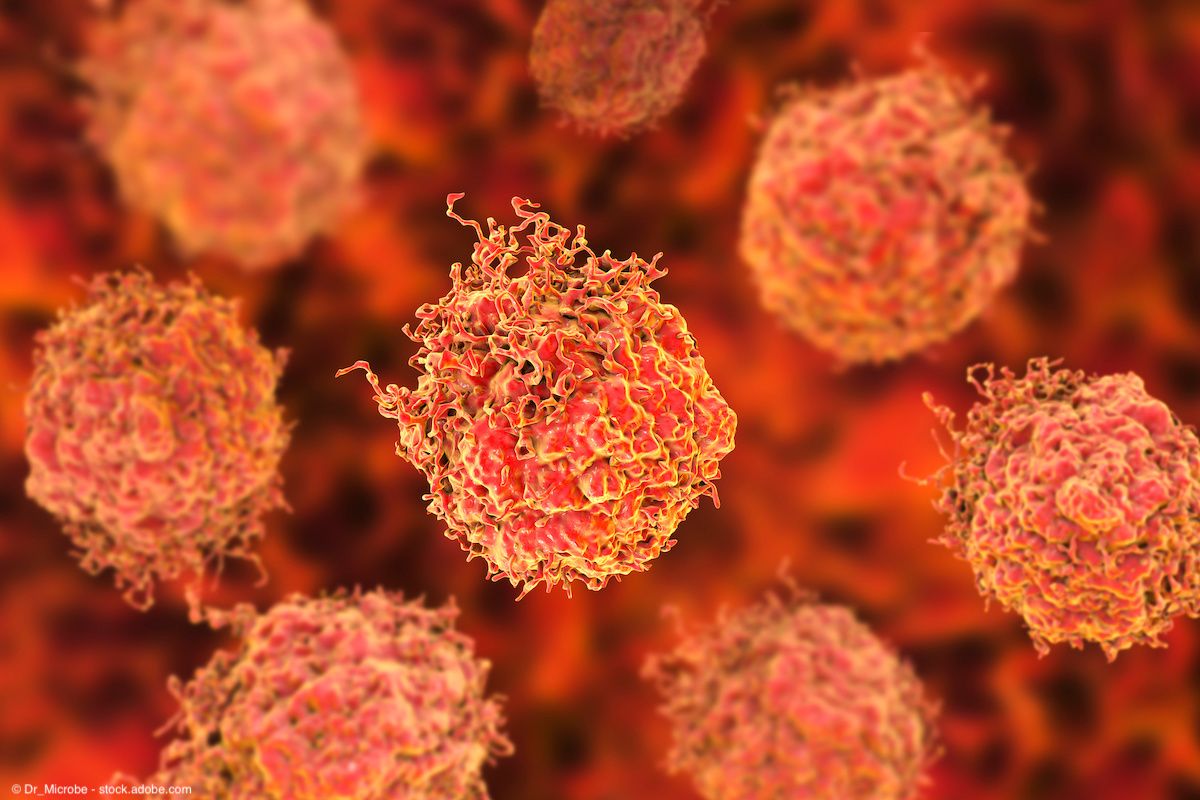News
Article
Molecular insights from study may yield new prostate cancer treatment strategies
Author(s):
“Our results provide molecular insights for potential therapeutic strategies to treat prostate cancer and other AR-involved diseases by targeting AR multivalent interactions,” said Zhijie “Jason” Liu, PhD.
A new study published in Molecular Cell found that alterations of certain molecular interactions could generate new strategies for the treatment of prostate cancer and related diseases.1
These findings offer a new perspective on AR-related human pathologies, particularly in the prostate cancer space as determining the optimal level of AR condensation necessary for mediating enhancer assembly could lead investigators to uncovering new therapeutic strategies in the future.

The research, which was led by investigators at Mays Cancer Center at The University of Texas Health Science Center at San Antonio (UT Health San Antonio), focused on androgen receptors (AR), and showed that changes in fine-tuned multivalent intrinsically disordered region (IDR)-IDR interactions may contribute to AR-related human pathologies. Additionally, investigators determined that alterations of these interactions might underlie the cause and development of disease.
These data highlight the role of optimal AR condensation in orchestrating enhancer assembly and that an optimum level of AR multivalent interactions is likely required for proper function.2
“Our results provide molecular insights for potential therapeutic strategies to treat prostate cancer and other AR-involved diseases by targeting AR multivalent interactions,” said Zhijie “Jason” Liu, PhD, associate professor and CPRIT Scholar in Cancer Research with Mays Cancer Center and the Institute of Biotechnology of the Department of Molecular Medicine at UT Health San Antonio, in a press release.1
While researchers know that transcription factors like AR play a pivotal role in responding to signals, the exact composition of these processes remains in question. In the study, AR, a key transcription factor, was explored to assess its behavior during enhancer assembly.
What they found was that AR forms condensates through multivalent interactions, which is facilitated by its N-terminal IDR. With this, AR can mediate enhancer assembly in response to androgen signaling.
Another finding revealed that AR IDR could be substituted by IDRs from specific proteins without changing AR's condensation capacity and its role in enhancing gene expression. The expansion of the poly(Q) track within AR IDR led to a higher AR condensation propensity.
By manipulating the condensation propensity of AR, investigators uncovered insights into its heterotypic multivalent interactions with other enhancer components and show that both weakened and strengthened AR condensation propensity led to impaired interactions and diminished transcriptional activity.
These findings offer a new perspective on AR-related human pathologies, particularly in the prostate cancer space as determining the optimal level of AR condensation necessary for mediating enhancer assembly could lead investigators to uncovering new therapeutic strategies in the future.
“Our work using AR as an example provides evidence for the importance of maintaining precise levels of multivalent interactions to achieve beneficial hormone-induced enhancer assembly events,” Liu added. “Collectively, our results suggest that disruption of the fine-tuned AR protein multivalent interactions might underlie AR-related human pathologies. AR multivalent interactions could be pharmacologically targeted to treat prostate cancer and other AR-involved diseases.”
References:
1. Mays cancer center: Targeting certain molecular interactions could yield new strategies for treating prostate cancer. News release. UT Health San Antonio. October 5, 2023. Accessed October 9, 2023. https://tinyurl.com/2s3rdp5m
2. Chen L, Zhang Z, Han Q, et al. Hormone-induced enhancer assembly requires an optimal level of hormone receptor multivalent interactions. Mol Cell. 2023;83(19):3438-3456.e12. doi:10.1016/j.molcel.2023.08.027
















